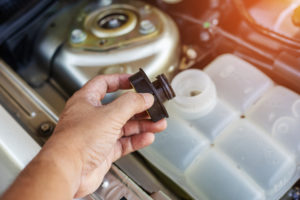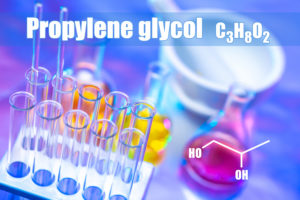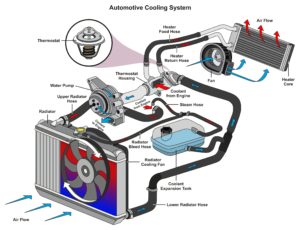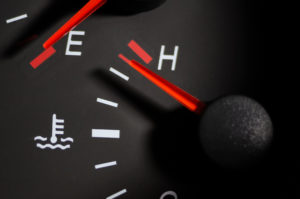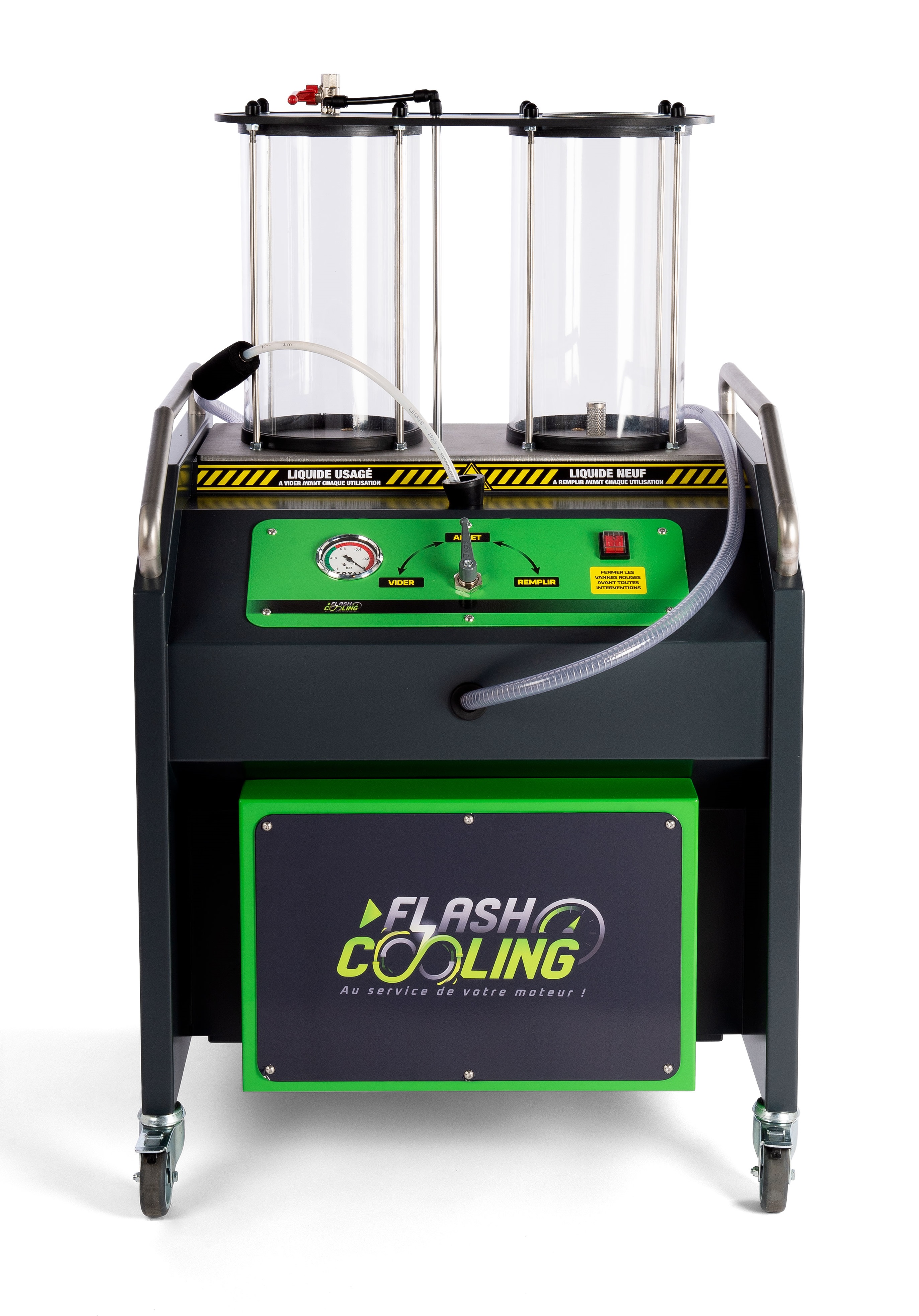Changing the coolant
The role of coolant
 Coolant is a very important element in the proper operation of an engine. It controls the temperature of the fluids and the different parts of the engine, regardless of the weather conditions. It is therefore imperative to change the coolant regularly for the engine’s longevity.
Coolant is a very important element in the proper operation of an engine. It controls the temperature of the fluids and the different parts of the engine, regardless of the weather conditions. It is therefore imperative to change the coolant regularly for the engine’s longevity.
Its composition is specific, based on water, antifreeze and additive. Its main qualities are that it remains liquid at very low temperatures (below 0°C) and does not evaporate and boil at very high temperatures (over 100°C). It also has anti-corrosive properties in order to protect the various metal parts of the engine.
When should it be changed?
Coolant loses its properties over time. It is therefore important to check its level regularly, every 3 to 6 months.
Draining, purging and replacing the coolant is an operation that must be carried out on all vehicles, every 2 to 4 years depending on the manufacturer.
Coolant level
If a sudden drop in coolant quantity is observed, there is a leak in the system. In this case, it is recommended that you consult a garage promptly.
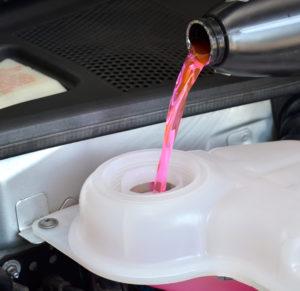 To check the coolant level, the vehicle should be parked on a flat surface. The engine must be cold, i.e. it must have been switched off for several hours, so as not to distort the results and to avoid any risk of splashing or burning in the event that it is necessary to open the expansion tank cap.
To check the coolant level, the vehicle should be parked on a flat surface. The engine must be cold, i.e. it must have been switched off for several hours, so as not to distort the results and to avoid any risk of splashing or burning in the event that it is necessary to open the expansion tank cap.
The expansion tank is usually made of transparent plastic. It indicates a “minimum” and a “maximum” level. The coolant level must be between these two levels.
- If the level is below the “minimum” mark, it is imperative to fill the expansion tank with the new liquid appropriate for the vehicle. Otherwise, the engine may not be cooled sufficiently and may overheat. Overheating can cause severe engine damage.
- If the level is above the “maximum” mark, the excess liquid must be removed. Otherwise, the cooling system will be over-pressurized, which can cause hot fluid to splash when the engine is running.
The different types of antifreeze
There are only 3 main types of coolant
 Green antifreeze. These are the classic antifreeze agents. Their phosphate and silicate-based formula protects aluminum and bare iron surfaces. They must be replaced every 30,000 miles (48,000 km) or every 2 years
Green antifreeze. These are the classic antifreeze agents. Their phosphate and silicate-based formula protects aluminum and bare iron surfaces. They must be replaced every 30,000 miles (48,000 km) or every 2 years- OAT Antifreeze (organic acid technology). These antifreezes are composed of sebacate and several organic acids including 2-ethylhexanoic acid. Unlike green antifreezes, they generally do not contain silicates or phosphates. In general, antifreezes based on organic acids are not green. They must be replaced every 4 years.
- HOAT** Antifreeze (OAT hybrid). These antifreezes use organic acids but not 2-ethylhexanoic acid, and generally contain silicates to protect aluminum surfaces. HOAT antifreeze is used by many European manufacturers. A HOAT antifreeze should be replaced every 4 years.



